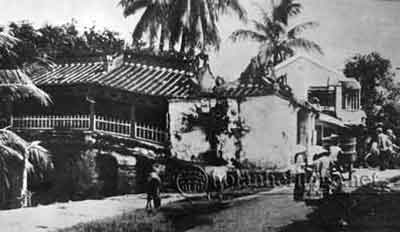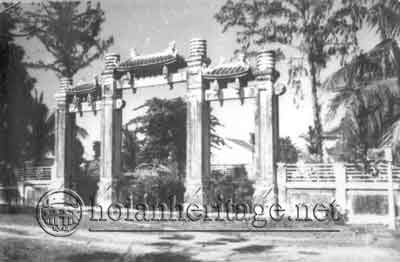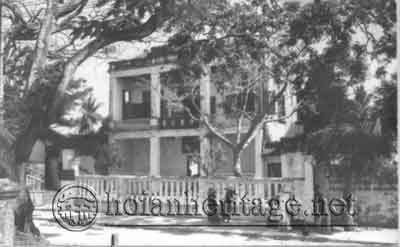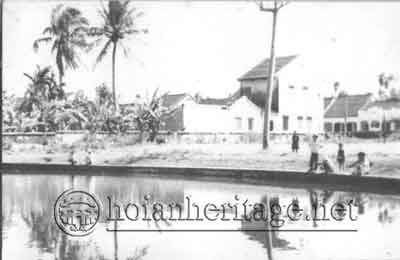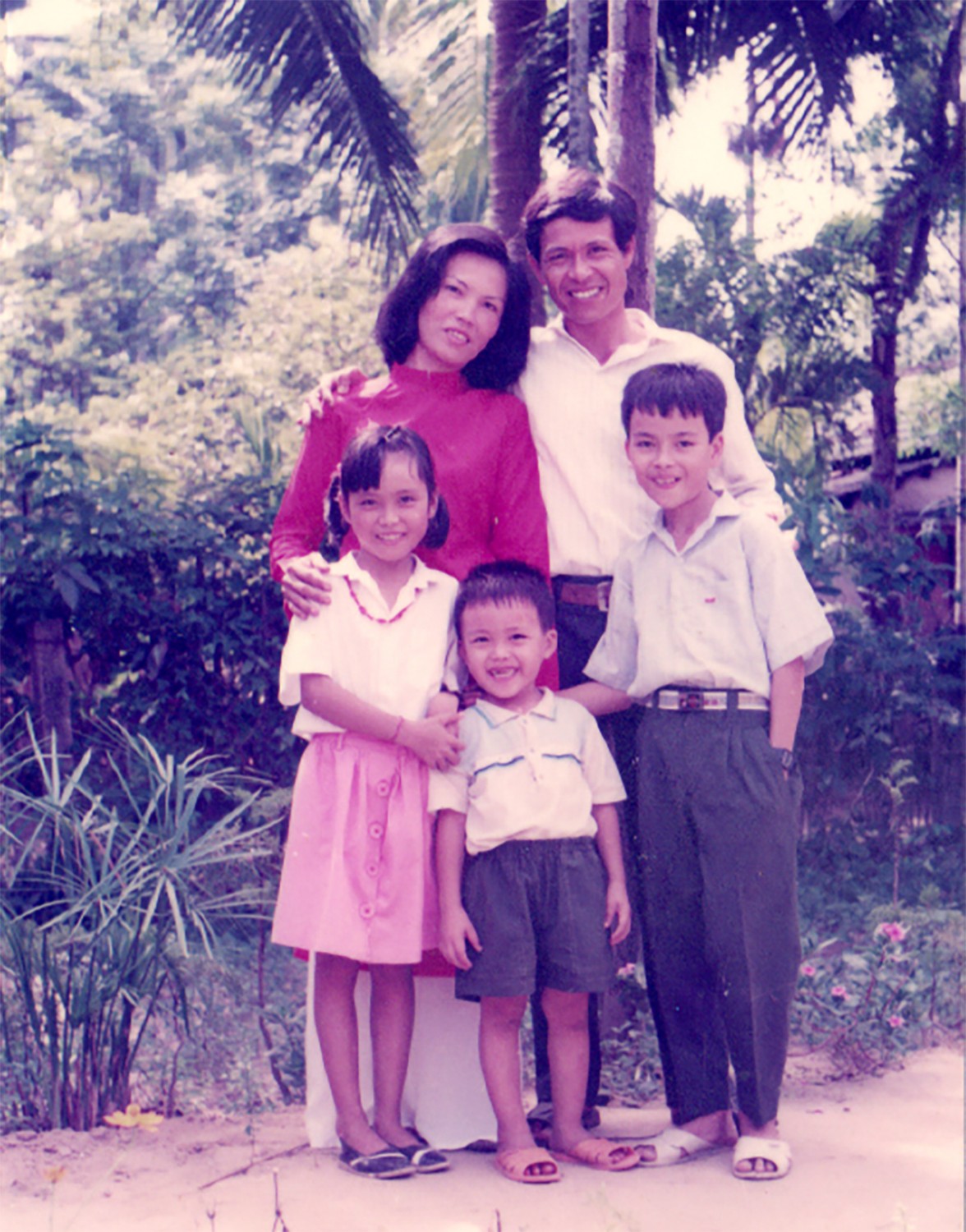Hoi An World Cultural Heritage Conservation Center
35 years of research, conservation and promotion of archaeological relics and artifacts in Hoi An
By 1985, at the time of the National Conference on Hoi An Ancient Town, the land of Hoi An was only known to researchers as a bustling medieval commercial port city that was preserved quite intact with a unique complex of architectural relics, while Hoi An underground, or more specifically Hoi An in the Prehistoric - Early Historical period, Lam Ap - Champa, was still a question mark.
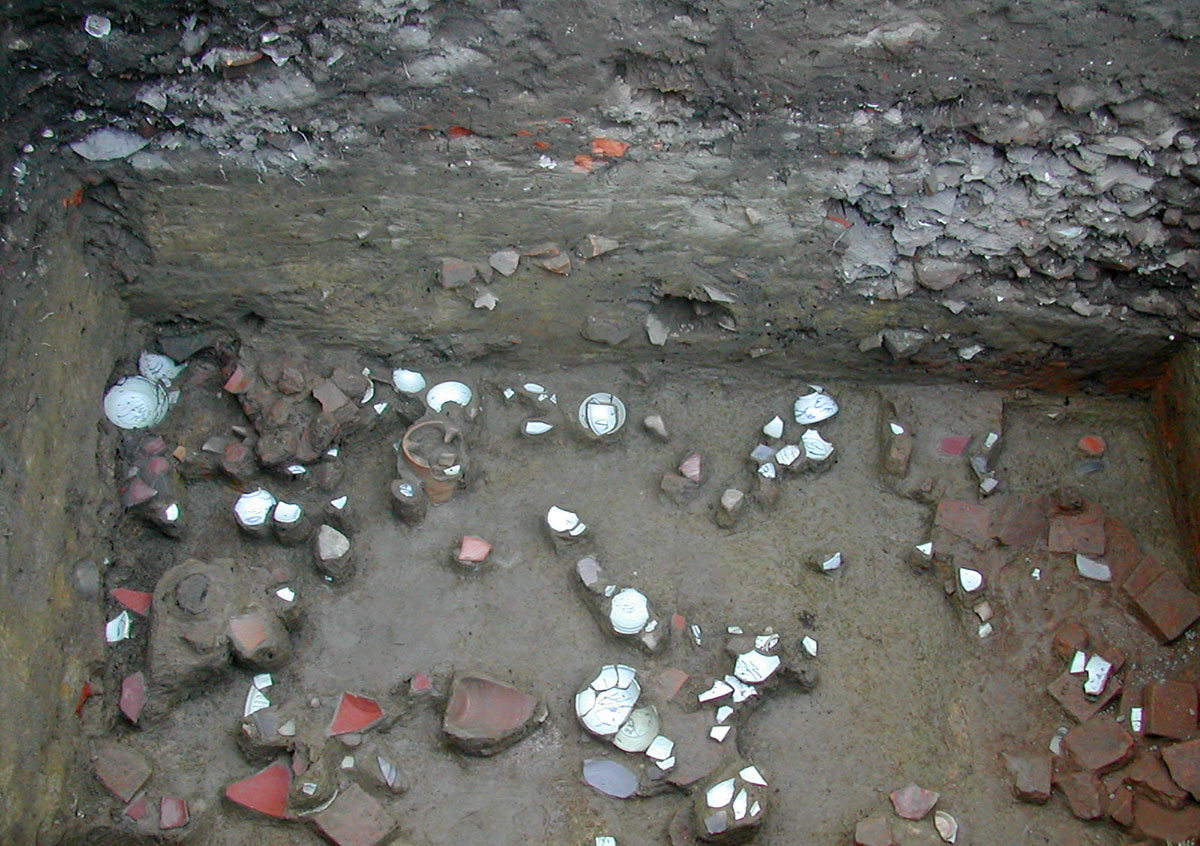
A trench in archaeological excavation at the House No. 16 Nguyen Thi Minh Khai street, Hoi An city - Photo: Hong Viet
However, with scientific sensitivity, researchers believe that Hoi An's prosperous development in the 16th - 18th centuries partly stemmed from the brilliant historical and cultural depth of previous periods. This assessment was proven through the 1989 archaeological field trip by experts from Vietnam Cultural Center of Hanoi University (University of Social Sciences and Humanities - Vietnam National University, Hanoi now) and Hoi An Monuments Management Board (Hoi An Center for Cultural Heritage Management and Preservation now). The first three relics in Hoi An belonging to the Sa Huynh culture, An Bang, Hau Xa, Thanh Chiem, were discovered, opening an important milestone in the research and understanding of Hoi An in the Prehistoric period. Also during this field trip, architectural vestiges of Cham towers and some Champa sculptures were found in Hoi An. Since the international conference on the ancient town of Hoi An in 1990, many archaeological research projects and programs on Hoi An have been implemented, such as the project "Archaeological excavation of Sa Huynh jar burial culture relics in Hoi An town" from 1993 - 1995 sponsored by Toyota Foundation, the archaeological research program of Hoi An Ancient Town jointly implemented by archaeologists from Showa Women's University - Japan, the project to excavate ancient shipwrecks in the sea of Cu Lao Cham, the fieldwork and archaeological excavation program on Cu Lao Cham island from 1997 - 2000, etc. Those archaeological research programs and projects have clarified many historical and cultural issues of Hoi An in the Prehistoric - Early Historical period, Lam Ap - Champa and the period of Hoi An international trading port in the 16th - 19th centuries. The massive collection of artifacts from archaeological sites/relics is the basis for the formation of unique thematic museums in Hoi An, attracting a large number of visitors.
Up to now, on the land of Hoi An, there have been 25 archaeological sites/relics with thousands of artifacts discovered from the Prehistoric period such as Ong Beach relic in Cu Lao Cham, An Bang burial relic, Hau Xa II, Xuan Lam, Thanh Chiem and Hau Xa I burial relic - site of Sa Huynh Cultural Complex; Dong Na relic, Dong Cao field, Mung bean field of Ba Mu pagoda, Trang Soi, Lang Ba, Bai Lang belonging to the Lam Ap - Champa period and many relics belonging to the Dai Viet period such as Cam Pho communal house, Tu Le communal house, house 129 Phan Chu Trinh, house 16 Nguyen Thi Minh Khai, house 76/18, 80, 85 Tran Phu, Trieu Chau military post, Nguyen Duy Hieu school, Tran Quy Cap school, Cau Pagoda and house 52/2 Phan Chu Trinh and ancient shipwreck of Cu Lao Cham.
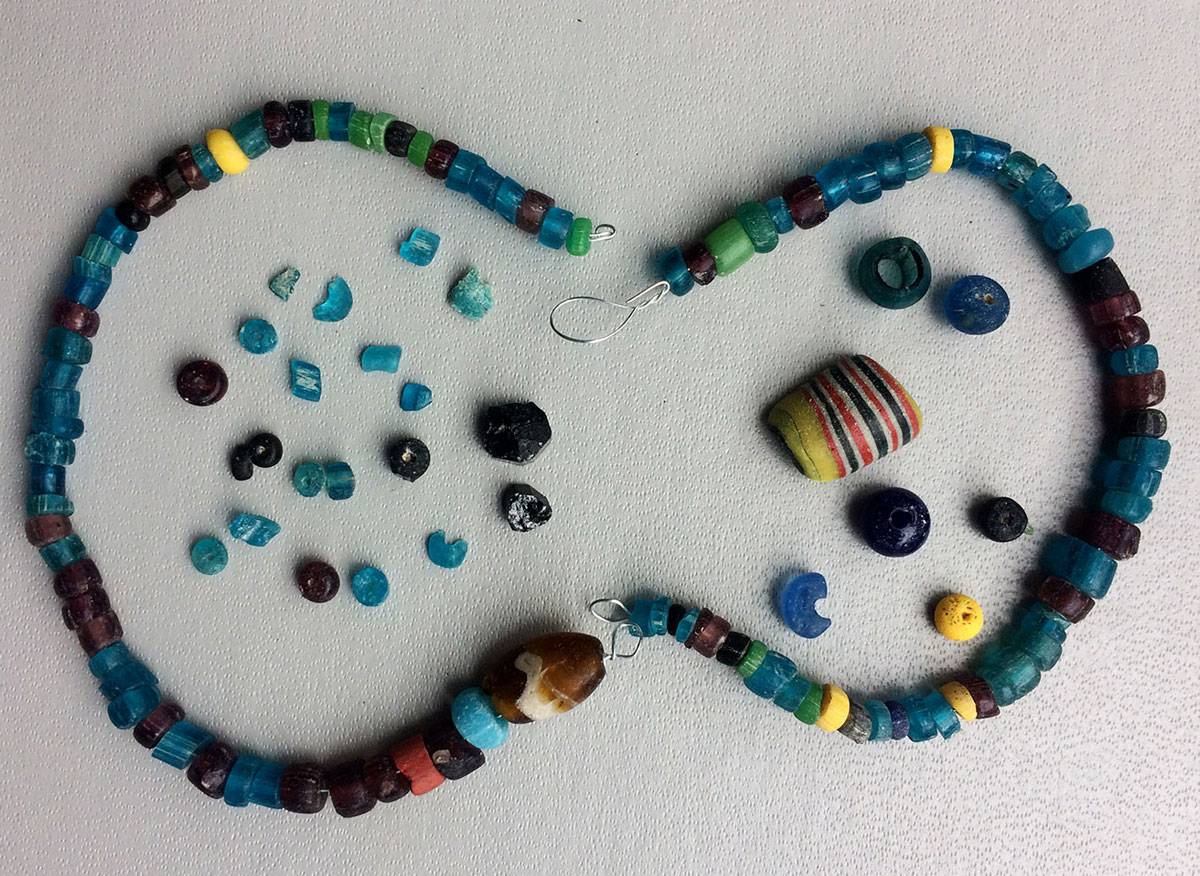
First of all, the results of research on archaeological relics and artifacts in Hoi An are all reported and introduced by scientists in magazines or in specialized seminars such as the Annual Conferences on Announcing New Discoveries in Archaeology, especially the scientific seminar on Sa Huynh Culture in Hoi An in 1995. Through this, the value and importance of archaeological relics and artifacts in Hoi An are gradually affirmed and open up new and interesting research directions.
The construction of management records and records proposing the ranking of relics at all levels to create a legal basis and better conditions for preserving and promoting the value of archaeological relics is also carried out regularly. Currently, in Hoi An, there are 02 archaeological sites ranked as national relics, including Bai Ong relic site from the Pre-Sa Huynh period dating back more than 3000 years ago and Bai Lang relic site dating back to the 8th-10th century; 05 relics ranked as provincial relics including An Bang, Hau Xa I, Hau Xa II burial relics from the classical Sa Huynh culture period and Trang Soi relic site, Ba Cam Thanh tomb from the Champa period. In addition, many relics have also been zoned for protection and have their land maps extracted.
In recent years, archaeological relics in Hoi An have been gradually marked with zoned protection markers and erected with relic information steles such as Bai Ong relic site, Bai Lang, Hau Xa I, Hau Xa II, An Bang and Trang Soi, Dong Na. Through this form, people can better understand the value of relics and the legal regulations on relic protection, creating conditions for tourists and scientists to visit and research relics more easily.
Regarding the work of propagating and promoting the value of relics and artifacts, it is the establishment of specialized museums and the compilation of publications and brochures to promote the value of relics and archaeological artifacts. In 1994, the specialized museum on Sa Huynh Culture was established at 149 Tran Phu, near the Japanese Covered Bridge relic with nearly 1,000 artifacts on display. These are typical artifacts excavated at archaeological relics in Hoi An belonging to the Sa Huynh Culture and the early Cham period. Through the displayed artifacts, explanatory information and the distribution map of relics at this museum, people and tourists can better recognize the characteristics of relics, artifacts and culture of Hoi An in the Prehistoric and early Cham periods.
In 1995, the Hoi An Trade Ceramics Museum was also established, located at 80 Tran Phu. This museum is a place to display ceramic artifacts collected by the people and during archaeological explorations and excavations of relics in Hoi An from the Champa and Dai Viet periods, notably Chu Dau ceramic artifacts salvaged from the ancient shipwreck of Cu Lao Cham and Hizen - Japanese ceramic artifacts. People and tourists can better understand the commercial ceramic products in Hoi An during the international trade route at this museum. Many archaeological artifacts from the Prehistoric - Early Historical, Lam Ap - Champa, Dai Viet periods are also displayed and introduced at the Hoi An History - Culture Museum at 10B Tran Hung Dao. At Cam Pho communal house, there are also displayed images of relics and excavated artifacts in the communal house yard serving the tour of Ancient Japanese Traces in Hoi An. In addition to permanent exhibitions at the museum, some Sa Huynh Hoi An cultural artifacts are also displayed on special topics at major museums around the world such as in the US, Japan, etc.
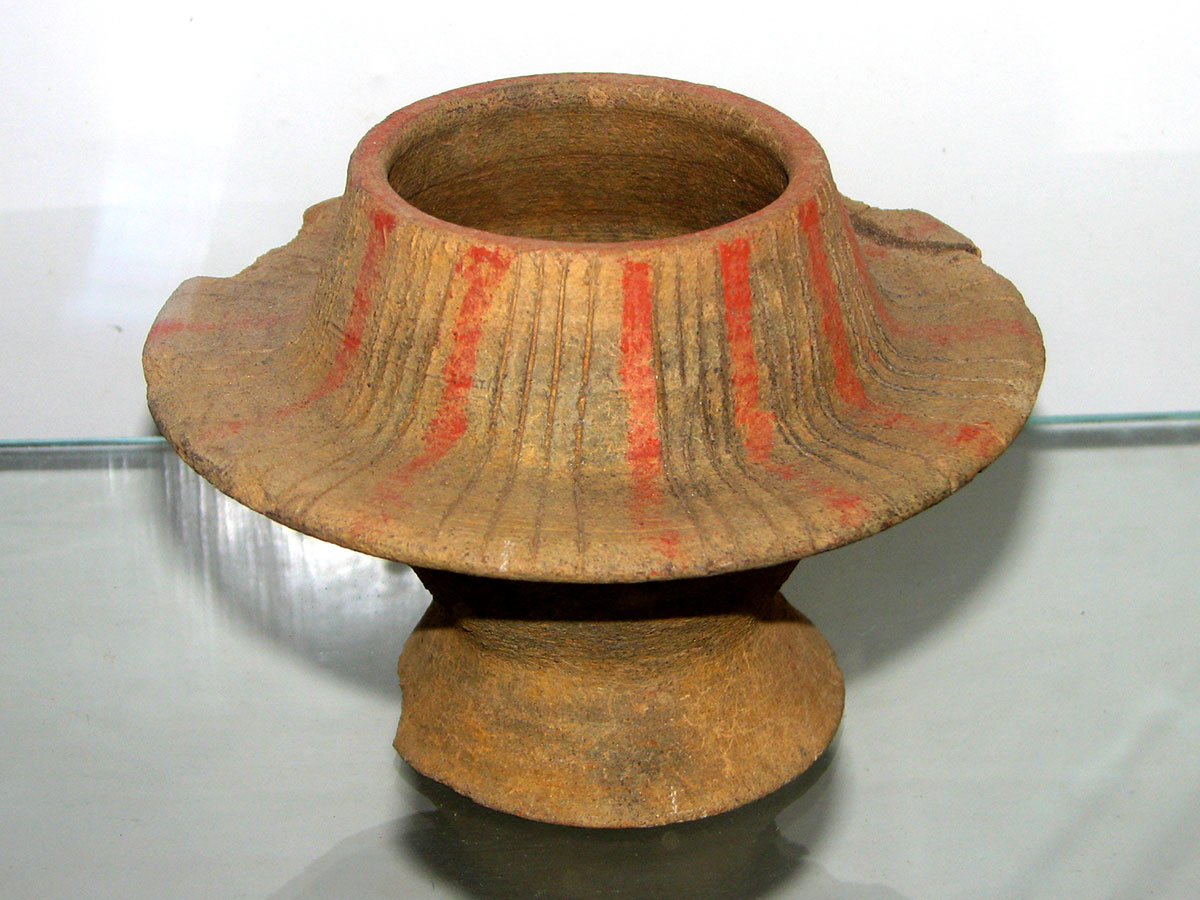
In addition to the achieved results, the work of preserving and promoting archaeological relics and artifacts in Hoi An still has a number of issues that need continued attention and investment. That is, due to being thousands of years old, especially having been underground for a long time, many archaeological artifacts are currently deteriorating and damaged, especially Sa Huynh culture iron artifacts. Therefore, the work of preservation and treatment to ensure the long-term existence of artifacts is extremely urgent. Enhance the attractiveness of archaeological artifacts displayed in museums through the application of modern display techniques and technologies. In addition, it is also necessary to aim to establish on-site museums to create new sightseeing and experience spots for people and tourists.
Hopefully, in the near future, with the dedication and efforts of experts and professional agencies, the attention of all levels, the work of preserving and promoting archaeological relics and artifacts in Hoi An will achieve new results.
Up to now, on the land of Hoi An, there have been 25 archaeological sites/relics with thousands of artifacts discovered from the Prehistoric period such as Ong Beach relic in Cu Lao Cham, An Bang burial relic, Hau Xa II, Xuan Lam, Thanh Chiem and Hau Xa I burial relic - site of Sa Huynh Cultural Complex; Dong Na relic, Dong Cao field, Mung bean field of Ba Mu pagoda, Trang Soi, Lang Ba, Bai Lang belonging to the Lam Ap - Champa period and many relics belonging to the Dai Viet period such as Cam Pho communal house, Tu Le communal house, house 129 Phan Chu Trinh, house 16 Nguyen Thi Minh Khai, house 76/18, 80, 85 Tran Phu, Trieu Chau military post, Nguyen Duy Hieu school, Tran Quy Cap school, Cau Pagoda and house 52/2 Phan Chu Trinh and ancient shipwreck of Cu Lao Cham.

Glass jewelry discovered at the Bai Lang archaeological site (Cham Island) - Photo: Hong Viet
Along with research, the work of preserving and promoting archaeological relics and artifacts in Hoi An is also given special attention.First of all, the results of research on archaeological relics and artifacts in Hoi An are all reported and introduced by scientists in magazines or in specialized seminars such as the Annual Conferences on Announcing New Discoveries in Archaeology, especially the scientific seminar on Sa Huynh Culture in Hoi An in 1995. Through this, the value and importance of archaeological relics and artifacts in Hoi An are gradually affirmed and open up new and interesting research directions.
The construction of management records and records proposing the ranking of relics at all levels to create a legal basis and better conditions for preserving and promoting the value of archaeological relics is also carried out regularly. Currently, in Hoi An, there are 02 archaeological sites ranked as national relics, including Bai Ong relic site from the Pre-Sa Huynh period dating back more than 3000 years ago and Bai Lang relic site dating back to the 8th-10th century; 05 relics ranked as provincial relics including An Bang, Hau Xa I, Hau Xa II burial relics from the classical Sa Huynh culture period and Trang Soi relic site, Ba Cam Thanh tomb from the Champa period. In addition, many relics have also been zoned for protection and have their land maps extracted.
In recent years, archaeological relics in Hoi An have been gradually marked with zoned protection markers and erected with relic information steles such as Bai Ong relic site, Bai Lang, Hau Xa I, Hau Xa II, An Bang and Trang Soi, Dong Na. Through this form, people can better understand the value of relics and the legal regulations on relic protection, creating conditions for tourists and scientists to visit and research relics more easily.
Regarding the work of propagating and promoting the value of relics and artifacts, it is the establishment of specialized museums and the compilation of publications and brochures to promote the value of relics and archaeological artifacts. In 1994, the specialized museum on Sa Huynh Culture was established at 149 Tran Phu, near the Japanese Covered Bridge relic with nearly 1,000 artifacts on display. These are typical artifacts excavated at archaeological relics in Hoi An belonging to the Sa Huynh Culture and the early Cham period. Through the displayed artifacts, explanatory information and the distribution map of relics at this museum, people and tourists can better recognize the characteristics of relics, artifacts and culture of Hoi An in the Prehistoric and early Cham periods.
In 1995, the Hoi An Trade Ceramics Museum was also established, located at 80 Tran Phu. This museum is a place to display ceramic artifacts collected by the people and during archaeological explorations and excavations of relics in Hoi An from the Champa and Dai Viet periods, notably Chu Dau ceramic artifacts salvaged from the ancient shipwreck of Cu Lao Cham and Hizen - Japanese ceramic artifacts. People and tourists can better understand the commercial ceramic products in Hoi An during the international trade route at this museum. Many archaeological artifacts from the Prehistoric - Early Historical, Lam Ap - Champa, Dai Viet periods are also displayed and introduced at the Hoi An History - Culture Museum at 10B Tran Hung Dao. At Cam Pho communal house, there are also displayed images of relics and excavated artifacts in the communal house yard serving the tour of Ancient Japanese Traces in Hoi An. In addition to permanent exhibitions at the museum, some Sa Huynh Hoi An cultural artifacts are also displayed on special topics at major museums around the world such as in the US, Japan, etc.

A lamp from the Sa Huynh Culture dislayed at Museum of Sa Huynh Culture in Hoi An - Photo: Hong Viet
In addition to establishing specialized museums, the compilation and publication of publications introducing archaeological relics and artifacts in Hoi An have also received attention. Currently, many books introducing archaeological relics and artifacts in Hoi An have been published, typically: Hoi An Archaeology - History (2003), Sa Huynh Culture in Hoi An (2005), Cu Lao Cham: Position, Potential and Prospects (2006), Hoi An Scenic Relics and Landscapes (2007), Cu Lao Cham Scenic Relics and Landscapes (2007), ... Archaeological relics and artifacts in Hoi An have also been introduced in many television reports and documentaries of VTV Da Nang and VTV1 channels such as: Vietnam - Japan and Buddhist Stories, Shadow of Time,...In addition to the achieved results, the work of preserving and promoting archaeological relics and artifacts in Hoi An still has a number of issues that need continued attention and investment. That is, due to being thousands of years old, especially having been underground for a long time, many archaeological artifacts are currently deteriorating and damaged, especially Sa Huynh culture iron artifacts. Therefore, the work of preservation and treatment to ensure the long-term existence of artifacts is extremely urgent. Enhance the attractiveness of archaeological artifacts displayed in museums through the application of modern display techniques and technologies. In addition, it is also necessary to aim to establish on-site museums to create new sightseeing and experience spots for people and tourists.
Hopefully, in the near future, with the dedication and efforts of experts and professional agencies, the attention of all levels, the work of preserving and promoting archaeological relics and artifacts in Hoi An will achieve new results.
Author: Võ Hồng Việt
Source: Hoi An Center for Cultural Heritage Management and Preservation
Newer articles
Older articles
